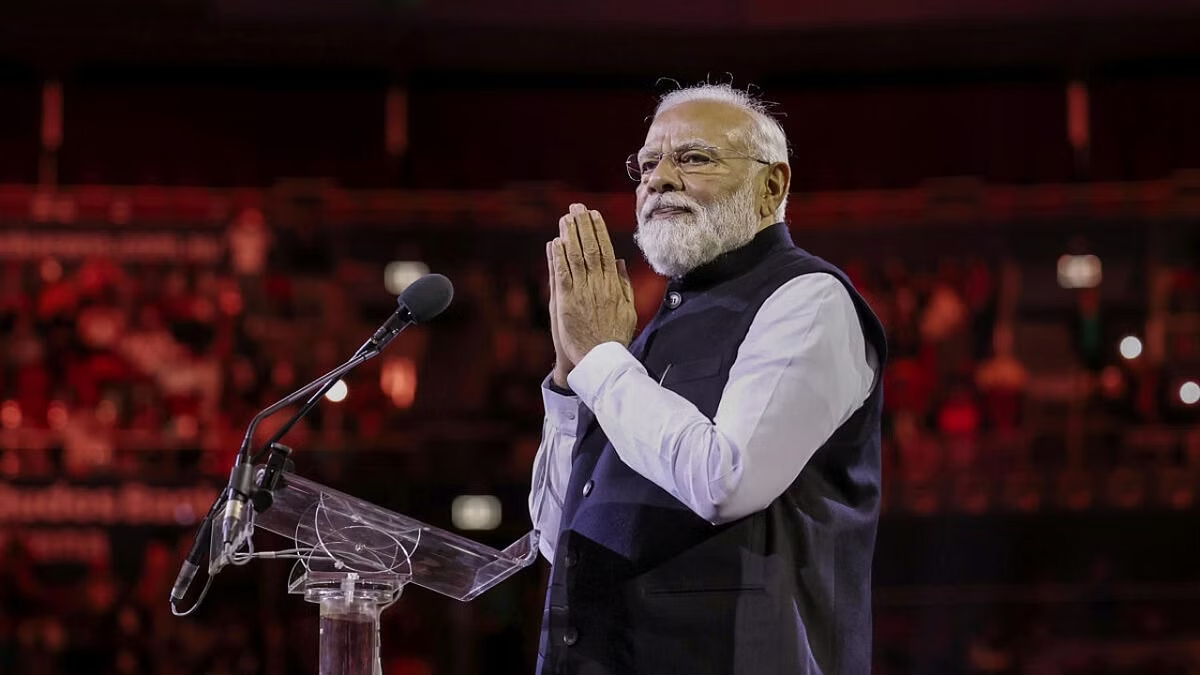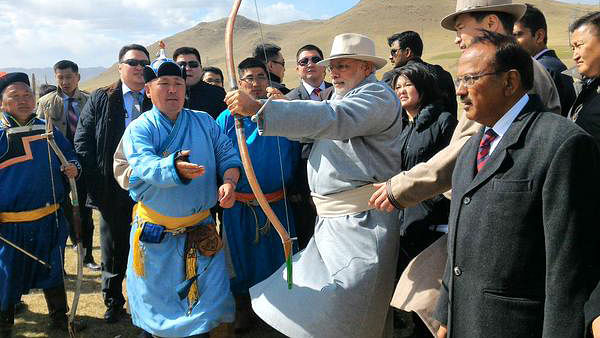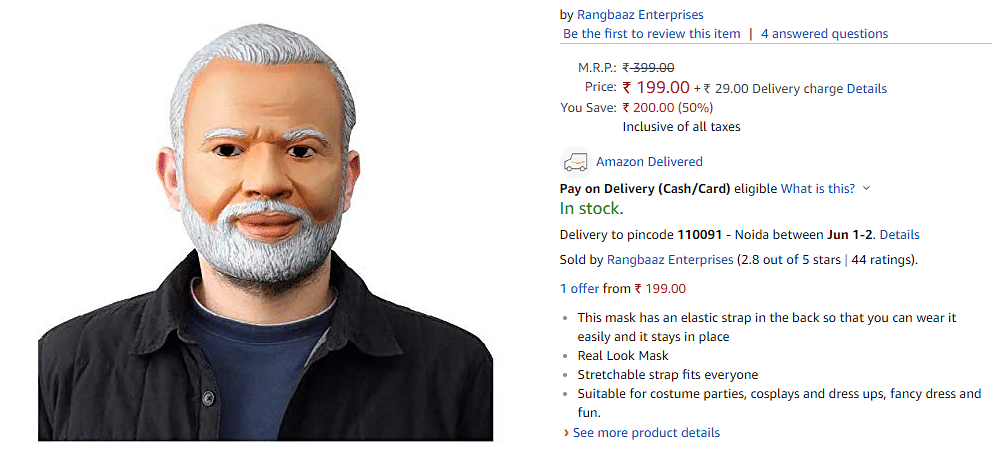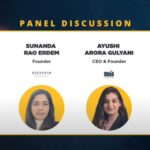
Following Modi’s campaigns & political messaging is akin to studying a full PR course at university.
My first ‘live’ tryst with ‘Brand Modi’ happened in Germany, a year after he won the 2014 general elections. In May 2015, India was the partner country at the renowned Hanover Trade Fair. Hanover, an industrial city in Germany, was transformed overnight into a colorful ‘mela’ ground.
The otherwise sleepy town of a little over five lakh inhabitants was suddenly jolted out of its equanimity with Indian music, food and brightly-clad elephants. The fierce cog-filled lions of the ‘Make in India’ campaign dotted almost every corner of the city: we were welcoming the biggest ‘superstar’ of the year – Narendra Modi, the vibrant Prime Minister of India.
This was in complete contrast to the Hanover Fair of 2006 where India was also a partner country and saw the presence of the then Prime Minister Dr Manmohan Singh – held in a much more subdued atmosphere.
This was in complete contrast to the Hanover Fair of 2006 where India was also a partner country and saw the presence of the then Prime Minister Dr Manmohan Singh – held in a much more subdued atmosphere.
Modi’s Communication Strategy: How To Map Your Audience & Stakeholders
Modi’s inaugural speech, delivered in Hindi, was fun, catchy, and left the audience bewildered. Asserting his promise of ‘opening many more doors’, he was acclaimed by leaders and ambitious industrialists with much exuberance. So much so, that even the reticent German Chancellor Angela Merkel, couldn’t help but bring in humor when she said, “We welcome the lion with open arms,” suggesting Germany’s openness to deepening ties with India. And indeed, today, the German Chancellor is observed to be one of Modi’s closest allies.
In the world of communication, the first exercise is to undertake ‘stakeholder mapping’ – that is, careful identification and the selection of the target audience, followed by focused messaging, and a thorough communications approach. Modi’s PR team seems to have had an elaborately meticulous approach to his audience. One may submit that this should be the case for every political leader of his stature. Be it his interviews with news channels, or the audience of ‘Bharat ki Baat, Sabke Saath’ event in London, each participant is claimed to have been selected after a rigorous filtering process.
The ‘non-political interview’ with actor Akshay Kumar during the campaign phase of the 2019 elections, was another out-of-the box PR exercise, achieving its goal of not just grabbing eyeballs, but also the imagination of the masses.
There are still media personalities and channels that have not been engaged with by Modi’s team and have been left to interact with other leaders that are his ‘sparring partners’ and ‘gate-keepers’, in the eventuality of a ‘malign campaign’. While this filtration happens to be a smart approach to avoid controversies and exposure to reputational risks, it also runs the risk of turning the few interactions that do take place, appear staged or questioned for their credibility.
Modi: ‘A Man For All Seasons’?
What stood out for me was PM Modi’s overnight transformation from the image of a ground-working, khadi-clad party worker and the CM of Gujarat, to a commanding statesman seen in expensive, tailored suits, who knew he had the world’s attention. In fact, PM Modi’s many visits abroad showcased his ease in maneuvering the global political elite, and the strength and reliability of his team comprising technocrats, industrialists, and veterans. At the same time, he also made the effort to transform himself into a role-model for every non-resident Indian (NRI) and the Indian diaspora when appearing in public – the Indian who embodied the visiting country as his own (remember the famous Mongolian Deel?!)
But in all his public appearances back home, PM Modi reflected the perfect image of ‘a mother’s devoted son’ – one who had earned his place as the patriarchal head of the family due to years of hard work and discipline. We call this a ‘tailor-made’ strategy as opposed to the ‘one-size-fits-all’ approach. This approach allowed for an immediate connect with whoever experienced Modi – he can become the person you ‘want to see’.
How To Deliver The ‘Right Message At The Right Time’
When it comes to framing catchy slogans or campaign taglines, studying ‘Brand Modi’ is the equivalent of undertaking the entire coursework of a university’s PR program. It’s not for nothing that PM Modi was honoured with the first-ever Philip Kotler Presidential Award by the World Marketing Summit India. For the uninitiated, Philip Kotler is an American marketing pundit.
Modi brings in the ‘right message’ at the ‘right time’. His pithy taglines, spoken in Hindi but written in English, always emit a universal message – for instance, ‘Beti Bachao, Beti Padhao’ – consistently transcending boundaries of status, gender, religion.
His speeches are perfectly drafted to cater to the ‘happy ending’ formula: build a story with a villain and depict Modi as the underdog hero who can overcome his adversaries, emerging victorious in the end. Coming to brand ‘NaMo’: Modi merchandise is being mass-produced and sold, including masks, coffee mugs, caps, T-shirts and other ‘memorabilia’.

Today, ‘Brand Modi’ is all about steel – epitomizing strong leadership, albeit, with an emotional grassroots connect. A leader who is not elitist, but a people’s champion. It does not matter what the balance sheet of his first mandate looked like; the ‘superstar brand’ carries it all. A larger-than-life leader, bigger than his party – it has been a one-man show throughout.
Modi: The ‘Fire-Fighter’ & His Diversionary Tactics
What is also worth studying is Prime Minister Narendra Modi’s communication management during a ‘reputation crisis’. It is thanks to strategically-placed PR stories and messaging that he was able to shake off the damage due to the serious allegations over demonetisation, GST, and alleged corruption in defence deals.
ADVERTISEMENT
How ‘Brand Modi’ Came To Be: A Masterclass In PR & Marketing
Following Modi’s campaigns & political messaging is akin to studying a full PR course at university. SUNANDA RAO ERDEMPublished: 29 May 2019, 3:47 PM ISTOPINION6 min read

My first ‘live’ tryst with ‘Brand Modi’ happened in Germany, a year after he won the 2014 general elections. In May 2015, India was the partner country at the renowned Hanover Trade Fair. Hanover, an industrial city in Germany, was transformed overnight into a colorful ‘mela’ ground.
The otherwise sleepy town of a little over five lakh inhabitants was suddenly jolted out of its equanimity with Indian music, food, and brightly-clad elephants. The fierce cog-filled lions of the ‘Make in India’ campaign dotted almost every corner of the city: we were welcoming the biggest ‘superstar’ of the year – Narendra Modi, the vibrant Prime Minister of India.
This was in complete contrast to the Hanover Fair of 2006 where India was also a partner country and saw the presence of the then Prime Minister Dr Manmohan Singh – held in a much more subdued atmosphere.
Also ReadDelhi Chooses Brand Modi Over Local Candidates, BJP Sweeps 7 Seats
Modi’s Communication Strategy: How To Map Your Audience & Stakeholders
Modi’s inaugural speech, delivered in Hindi, was fun, catchy, and left the audience bewildered. Asserting his promise of ‘opening many more doors’, he was acclaimed by leaders and ambitious industrialists with much exuberance. So much so, that even the reticent German Chancellor Angela Merkel, couldn’t help but bring in humor when she said, “We welcome the lion with open arms,” suggesting Germany’s openness to deepening ties with India. And indeed, today, the German Chancellor is observed to be one of Modi’s closest allies.
In the world of communication, the first exercise is to undertake ‘stakeholder mapping’ – that is, careful identification and the selection of the target audience, followed by focused messaging, and a thorough communications approach. Modi’s PR team seems to have had an elaborately meticulous approach to his audience. One may submit that this should be the case for every political leader of his stature. Be it his interviews with news channels, or the audience of ‘Bharat ki Baat, Sabke Saath’ event in London, each participant is claimed to have been selected after a rigorous filtering process.
The ‘non-political interview’ with actor Akshay Kumar during the campaign phase of the 2019 elections, was another out-of-the box PR exercise, achieving its goal of not just grabbing eyeballs, but also the imagination of the masses.
There are still media personalities and channels that have not been engaged with by Modi’s team and have been left to interact with other leaders that are his ‘sparring partners’ and ‘gate-keepers’, in the eventuality of a ‘malign campaign’. While this filtration happens to be a smart approach to avoid controversies and exposure to reputational risks, it also runs the risk of turning the few interactions that do take place, appear staged or questioned for their credibility.Also ReadKotler ‘Endorses’ Award to PM Modi Amid Questions from OppositionADVERTISEMENT
Modi: ‘A Man For All Seasons’?
What stood out for me was PM Modi’s overnight transformation from the image of a ground-working, khadi-clad party worker and the CM of Gujarat, to a commanding statesman seen in expensive, tailored suits, who knew he had the world’s attention. In fact, PM Modi’s many visits abroad showcased his ease in maneuvering the global political elite, and the strength and reliability of his team comprising technocrats, industrialists, and veterans. At the same time, he also made the effort to transform himself into a role-model for every non-resident Indian (NRI) and the Indian diaspora when appearing in public – the Indian who embodied the visiting country as his own (remember the famous Mongolian Deel?!)

But in all his public appearances back home, PM Modi reflected the perfect image of ‘a mother’s devoted son’ – one who had earned his place as the patriarchal head of the family due to years of hard work and discipline. We call this a ‘tailor-made’ strategy as opposed to the ‘one-size-fits-all’ approach. This approach allowed for an immediate connect with whoever experienced Modi – he can become the person you ‘want to see’.Also ReadFrom ‘Divider in Chief’ to ‘Modi United India’: How TIME ChangedADVERTISEMENT
How To Deliver The ‘Right Message At The Right Time’
When it comes to framing catchy slogans or campaign taglines, studying ‘Brand Modi’ is the equivalent of undertaking the entire coursework of a university’s PR program. It’s not for nothing that PM Modi was honoured with the first-ever Philip Kotler Presidential Award by the World Marketing Summit India. For the uninitiated, Philip Kotler is an American marketing pundit.

Modi brings in the ‘right message’ at the ‘right time’. His pithy taglines, spoken in Hindi but written in English, always emit a universal message – for instance, ‘Beti Bachao, Beti Padhao’ – consistently transcending boundaries of status, gender, religion.
His speeches are perfectly drafted to cater to the ‘happy ending’ formula: build a story with a villain and depict Modi as the underdog hero who can overcome his adversaries, emerging victorious in the end. Coming to brand ‘NaMo’: Modi merchandise is being mass-produced and sold, including masks, coffee mugs, caps, T-shirts and other ‘memorabilia’.

Today, ‘Brand Modi’ is all about steel – epitomizing strong leadership, albeit, with an emotional grassroots connect. A leader who is not elitist, but a people’s champion. It does not matter what the balance sheet of his first mandate looked like; the ‘superstar brand’ carries it all. A larger-than-life leader, bigger than his party – it has been a one-man show throughout.ADVERTISEMENT
Modi: The ‘Fire-Fighter’ & His Diversionary Tactics
What is also worth studying is Prime Minister Narendra Modi’s communication management during a ‘reputation crisis’. It is thanks to strategically-placed PR stories and messaging that he was able to shake off the damage due to the serious allegations over demonetisation, GST, and alleged corruption in defence deals.
When Modi started facing the heat over the employment crisis or farm distress, he used fire-fighting (diversionary) tactics and announced new policy reforms. His silence on controversial matters such as mob-lynching, unemployment figures, banking, and NPA failures was studied and impenetrable.
Many argue that a responsible leader should address issues head-on, but multiple instances have shown that a direct approach to such controversial/sensitive matters in public actually allows these controversies to stay alive.
During a crisis, it is most important to highlight one’s humane side and not engage in a war of words as many big companies and leaders are won’t to do.
Modi: From ‘Vikas Purush’ to ‘Iron Man’
PM Narendra Modi has successfully managed to secure two landslide wins – transcending vote-bank politics, allegations of fueling communal sentiments, and failures in terms of policy implementation. This can be attributed to his focus on one key aspect that has led to some of the most successful PR campaigns across the world: his masterful approach of tapping into the emotional sentiment of the Indian masses. In 2014, Modi may have tapped into the frustrations of the Indian youth, businessmen and farmers alike, to engender hope with the wave of ‘Achhe Din’.
During his 2019 election campaign, one could see an equally strong emotional wave of nationalism after the Balakot air strikes just two months before the elections which turnout out to be a home-run for Modi.
(Sunanda Rao Erdem is the Founder & CEO, Seraphim Communications LLP. She is also a professional opera singer, and Board Member, The Neemrana Music Foundation. She tweets at @sunandaraoerdem. This is an opinion piece and the views expressed above are the author’s own. The Quint neither endorses nor is responsible for the same.)
(At The Quint, we are answerable only to our audience. Play an active role in shaping our journalism by becoming a member. Because the truth is worth it.)



